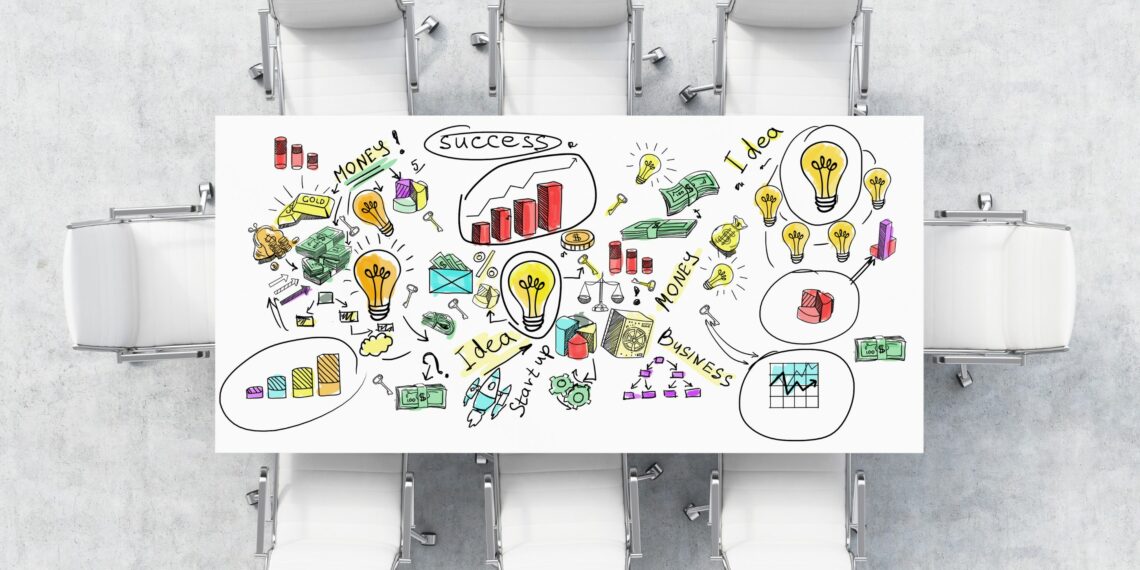We spend nearly 8 hours a week in meetings, and almost 75% of them are considered unproductive. Regardless of the topic or participants, most meetings tend to feel the same—a remix of the previous one with only minor changes.
Have you ever wondered how to make these meetings more effective and engaging for the participants?
If so, you’re in the right place!
Here, you’ll find tips accumulated over years of experience. We’ll explore why it’s crucial to diversify your approach and how to properly prepare your meetings with 7 practical techniques that will make them not only smoother but also more interesting for all participants.
1. The 3 Key Roles of a Meeting Facilitator
Before diving into the “how-to,” let’s first understand the role of the facilitator. During a meeting, the facilitator takes on three essential roles:
- Producer: Ensures concrete and tangible results.
- Facilitator: Promotes smooth and effective exchanges.
- Regulator: Maintains the proper flow of the meeting by managing time and ensuring that established rules are followed.
In short, the facilitator must ensure balanced participation among attendees, stick to the allotted time, and follow the rules to produce concrete results.
2. Before the Meeting: Preparation
Technique #1 — Prepare an Agenda
It’s important to clearly define the objective and the topics to be addressed. To do this, create a table listing each topic, its nature, and the expected outcome. This will help you clarify the key points to discuss:
- The topic: What needs to be addressed, in a few words.
- The nature: Is it just information, or is it a topic for debate?
- The deliverable: What outcome do you expect at the end? A decision, specific information, or something else?
This type of table will help you organise your thoughts and guide the discussion effectively.
Tip: Add a “Responsible” column to assign the topic to the right person at the end of the meeting. This tool will help put an end to “magic meetings” where no decisions are made or responsibilities assigned.
Technique #2 — Establish the Meeting Model
Depending on the objectives and expected outcomes, choose the most appropriate meeting model for the topics to be discussed:
- For purely informational topics, use slides to share information clearly and concisely.
- For topics requiring decisions, you can explore various tools such as:
- Brainstorming (for the design phase)
- Voting systems (to decide between several options)
- Mind mapping, among others.
3. During the Meeting: Facilitation
Technique #3 — The Icebreaker
For meetings lasting 1.5 hours or more, consider including an icebreaker. An icebreaker is an activity used at the start of a meeting to encourage interaction, foster relaxation, and create a friendly atmosphere, allowing participants to get to know each other better and facilitate subsequent exchanges. You can find many icebreakers online or create your own if you’re feeling inventive!
Technique #4 — Establish Ground Rules
To ensure the meeting runs smoothly, establish some “ground rules” that all participants must respect. Some examples include:
- Turning on cameras for remote meetings.
- Respecting everyone’s speaking time (Tip: Use the “raise hand” option available in most video conferencing tools).
- Encouraging kindness among all.
- No judgement of ideas between colleagues.
The idea is to have a common framework for all participants and for you to maintain control over the meeting. As the saying goes, “he who sets the rules controls the outcome!”
However, be careful not to overdo it or impose overly restrictive rules, as this could discourage participants and compromise their involvement.
Technique #5 — Set Deadlines and Respect Time Limits
Team meetings can quickly overrun and lose effectiveness if not properly managed. With the schedule established in Technique #2, ensure that the time allotted for each agenda item is respected.
If a discussion drags on, refocus it or decide to postpone it to a later meeting. This ensures productivity and optimises everyone’s time.
Technique #6 — Encourage Active Participation
Ensure that all team members feel comfortable contributing and expressing themselves during the meeting. Encourage diverse ideas and opinions while ensuring that no participant dominates the discussion.
Tip: Use techniques such as a roundtable to allow everyone to speak and ensure balanced participation. If you know your participants well, don’t hesitate to involve them by asking direct questions, like: “This topic seems to generate interest and varied opinions. What do you think, Cyril?”
If at this point, some participants do not seem relevant to the meeting, it may be worth reconsidering their presence.
4. At the End of the Meeting: How to Close it Effectively
Technique #7 — Close with a Summary and Task Allocation
After the meeting, take the time to summarize the discussions and key points, ensuring that all participants leave with the same understanding.
For each topic discussed, assign a responsible person and note their name in the designated box in the table. Then, set appropriate deadlines to track their progress. This will ensure better management of the agreed actions and effective progress toward the set goals. Send this summary by email to all participants and relevant stakeholders.
Tip: Formalise this summary on the same day to avoid forgetting important details over time.
5. In Summary
The success of a meeting is greatly impacted by our involvement and preparation. If we had to summarise in a few points:
- Be creative in selecting workshops and working methods.
- Set up a schedule where each point has its allotted time (between 5 and 30 minutes depending on the complexity).
- Use visual tools to illustrate concepts, capture key ideas, and track the progress of discussions. This keeps participants engaged and promotes better collective understanding.
- Avoid overly long meetings while being realistic about the time needed. On average, add 10 to 15 minutes to your estimate if you have several topics to discuss.
- Don’t forget to engage your colleagues by appointing someone responsible for tracking and sharing the progress of the topic assigned to them.
The article aims to improve the effectiveness and engagement of participants during meetings by offering concrete techniques to diversify the meeting approach and prepare them effectively.
The three essential roles of a meeting facilitator are: Producer (ensuring tangible results), Facilitator (promoting smooth exchanges), and Regulator (maintaining the proper flow by managing time and rules).
It is recommended to prepare a clear agenda with a table listing the topics, their nature, and the expected deliverables. This also includes assigning responsibilities for each topic discussed.
Using an “Icebreaker” is recommended for meetings lasting 1.5 hours or more to relax the atmosphere and encourage interaction among participants.
Suggested rules include turning on cameras for remote meetings, respecting everyone’s speaking time, fostering kindness, and avoiding judgment among colleagues.












